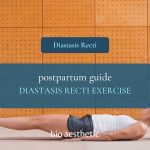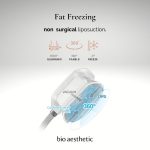Diastasis Recti

Diastasis Recti, a common condition affecting many individuals, particularly postpartum women, involves the separation of the abdominal muscles.
This condition not only impacts physical appearance but can also lead to a range of health issues if not addressed properly.
Understanding the symptoms, engaging in targeted exercises, and exploring treatment options are crucial steps towards recovery.
In this comprehensive guide, we delve into the nuances of Diastasis Recti, with a focus on Singaporean women, providing you with the knowledge and resources to effectively manage this condition.
What is Diastasis Recti?

Diastasis Recti occurs when there is a significant separation between the two sections of the rectus abdominis muscle, which is commonly known as the “six-pack” muscle.
This separation results from the stretching of the linea alba, a band of connective tissue that runs down the middle of the abdomen, connecting these muscles.
A noticeable bulge or “pooch” in the stomach region is frequently a sign of the condition, especially when the muscles are tense.
Also known as abdominal gap or abdominal seperation, it is common with pregnant women, as the expanding uterus puts pressure on the abdominal wall, causing the muscles to stretch and separate.
However, it’s not exclusive to pregnancy; factors such as rapid weight gain, improper exercise techniques, and even genetics can contribute to the development of abdominal separation.
How does Diastasis Recti happen?

The primary cause of Diastasis Recti is excessive internal pressure on the abdominal wall.
During pregnancy, for example, the expanding uterus stretches the muscles and connective tissue to accommodate the growing fetus, leading to separation.
Other factors contributing to the development of abdominal separation include rapid weight gain, improved exercise techniques that increase abdominal pressure, and, in some cases, genetics.
Abdominal Gap happen when the rectus abdominis muscles, which run down the middle of the stomach, separate due to the stretching of the linea alba, the connective tissue that binds these muscles together.
Symptoms of Diastasis Recti
Recognizing the symptoms of Diastasis Recti is the first step towards treatment. Common signs include:
- A noticeable bulge or “pooch” in the belly area.
- Lower back pain due to the imbalance in core strength.
- Poor posture results from weakened abdominal muscles.
- Difficulty in performing regular activities that require abdominal engagement.
- A visible gap or bulge in the abdominal area, particularly when the abdominal muscles are tense.
- Constipation and bloating as a result of the reduced support for the abdominal organs.
How to self-test for Diastasis Recti?

Discovering whether you have abdominal separation is a crucial first step towards recovery, and self-testing is a simple and effective way to do so.
This condition, characterized by the separation of the abdominal muscles, can be identified through a straightforward self-assessment technique.
-
- Begin by lying flat on your back with your knees bent and your feet flat on the floor.
- Place one hand behind your head for support, and with your other hand, gently press your fingertips into the center of your abdomen.
- Slowly lift your head and shoulders off the ground, engaging your core muscles.
- Feel for any gap or softness between the muscles; a separation of more than two finger-widths could indicate diastasis recti.
By understanding how to check for abdominal separation at home, you can take proactive steps towards managing and improving this condition, ensuring a healthier and more comfortable lifestyle.
Diastasis Recti Treatment in Singapore
For those seeking Diastasis Recti treatment in Singapore, there are several options ranging from conservative to surgical interventions, depending on the severity of the condition.
Traditional Diastasis Recti treatments:
Physiotherapy: where specialized therapists provide exercise techniques to strengthen the core muscles
Supportive binder: to offer temporary relief and support during recovery.
Non-surgical Diastasis Recti treatments:
Tesla Former (Functional Magnetic Stimulator): provide up to 50,000 muscle contractions in a short 30-minute session to strengthen abdominal muscles and close gap
Surgical Diastasis Recti treatments:
Abdominoplasty surgery requires stitching the left and right abdominal muscles together from the lower chest to the pelvic area.
| Type | Tesla Former | Surgery | Abdominal Exercise |
|---|---|---|---|
| Treatment | 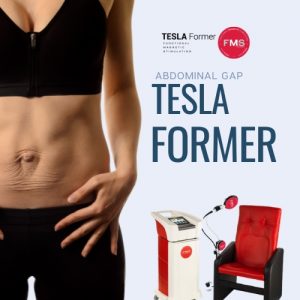 |
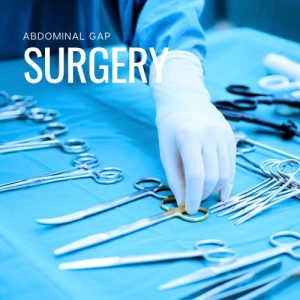 |
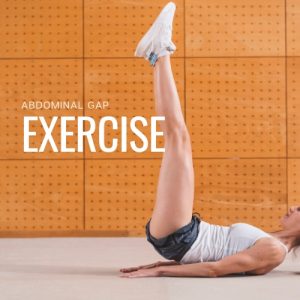 |
| Effectiveness | Effective clinical study results | Effective with downtime | Effective, dependent on exercise |
| Price | First trial $99 | $10,000 – $30,000 | $100 / session |
| Scars | No | Potentially | No |
| Downtime | No downtime | 2 to 3 months | No downtime |
| Sessions | 8 sessions | 1 surgery | at least 30 sessions |
Diastasis Recti Specialist in Singapore

At Bio Aesthetic, we have over 30 years of experience treating postpartum conditions, specifically, Diastasis Recti.
We have an extensive range of postpartum treatments, such as:
Venus Legacy: Cellulite Removal and Skin Tightening
Venus Fiore: Vaginal Tightening
Fat Freeze: Burn and eliminate fats
With the latest functional magnetic stimulator (FMS) technology, it can effectively improve and close up your abdominal gap with no surgery required.
Furthermore, you will not be at risk of scarring, complications, or long downtime.
Contact us today to make an appointment
What are the types of Diastasis Recti Exercises

Engaging in specific exercises is a vital component of managing abdominal separation.
These exercises aim to strengthen the core and reduce the gap between the abdominal muscles.
It’s crucial to approach exercises with caution, as certain movements can exacerbate the condition. Pilates and specific postnatal workouts have been found to be particularly beneficial.
In Singapore, there are fitness professionals and physiotherapists specializing in postpartum recovery who can guide you through a tailored exercise regimen.
- Pelvic Tilts
- Heel Slides
- Deep Belly Breathing with Abdominal Contraction
- Leg Lifts (modified for safety)
It’s recommended to consult with a healthcare professional before starting any diastasis recti exercises program, especially after childbirth.
Title
Diastasis Recti: Frequently Asked Question (FAQ)
How to prevent Diastasis Recti?
Preventing Diastasis Recti is essential for maintaining a strong and healthy core, especially for expectant mothers and fitness enthusiasts.
The key to prevention lies in adopting safe exercise routines that strengthen the core without overexerting the abdominal muscles.
Focus on engaging in exercises that enhance the pelvic floor and transverse abdominis, such as pelvic tilts, kegels, and deep belly breathing techniques.
Additionally, maintaining good posture, avoiding activities that strain the midline, and gradually increasing the intensity of abdominal exercises can significantly reduce the risk of developing abdominal separation.
How long does it take for Diastasis Recti to heal?
The healing timeline for Diastasis Recti can vary significantly from person to person, depending on various factors such as the severity of the condition, the effectiveness of the treatment approach, and individual health and lifestyle choices.
Generally, with consistent and proper management, including targeted exercises and physiotherapy, individuals may begin to see improvements within a few weeks to several months.
For Tesla former, we can see very good improvements after 8 sessions of functional magnetic stimulator (FMS).
What does Diastasis Recti feel like?
Diastasis Recti can manifest in various sensations, but most commonly, individuals report feeling a noticeable bulge or weakness in the center of their abdomen, especially when engaging their core muscles or when they cough, sit up, or stand from a lying position.
This condition may not always be painful, but it can give a sense of discomfort or instability in the midsection, affecting posture and leading to lower back pain due to the imbalance in core strength.
Some may also experience a stretching or pulling sensation around the belly button area.
Understanding these symptoms is crucial for early detection and management.
BOOK NOW PAY LATER.
Call Us Today! +65 6333 4566 • hello@bioaesthetic.com.sg
Recommended Treatment
ABOUT BIO AESTHETIC LASER CLINIC

Bio Aesthetic Laser Clinic is a multi award winning aesthetic clinic in Singapore specialising in treatments such as:
MORE QUESTIONS?
Feel free to Call Us / Whatsapp Us. We are more than happy to address your concerns






















